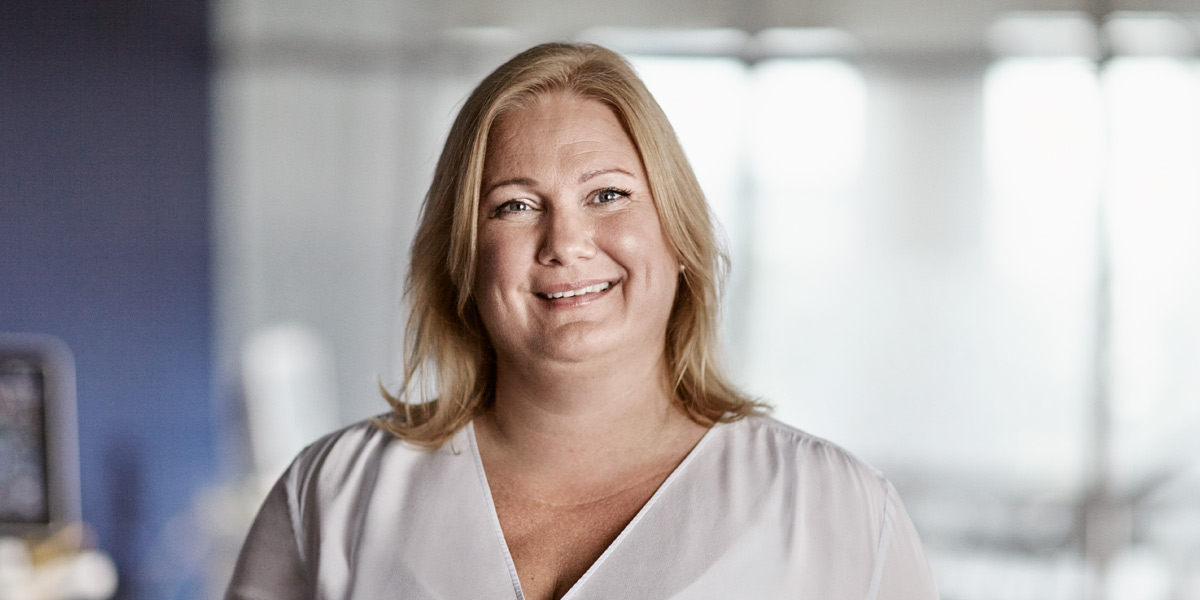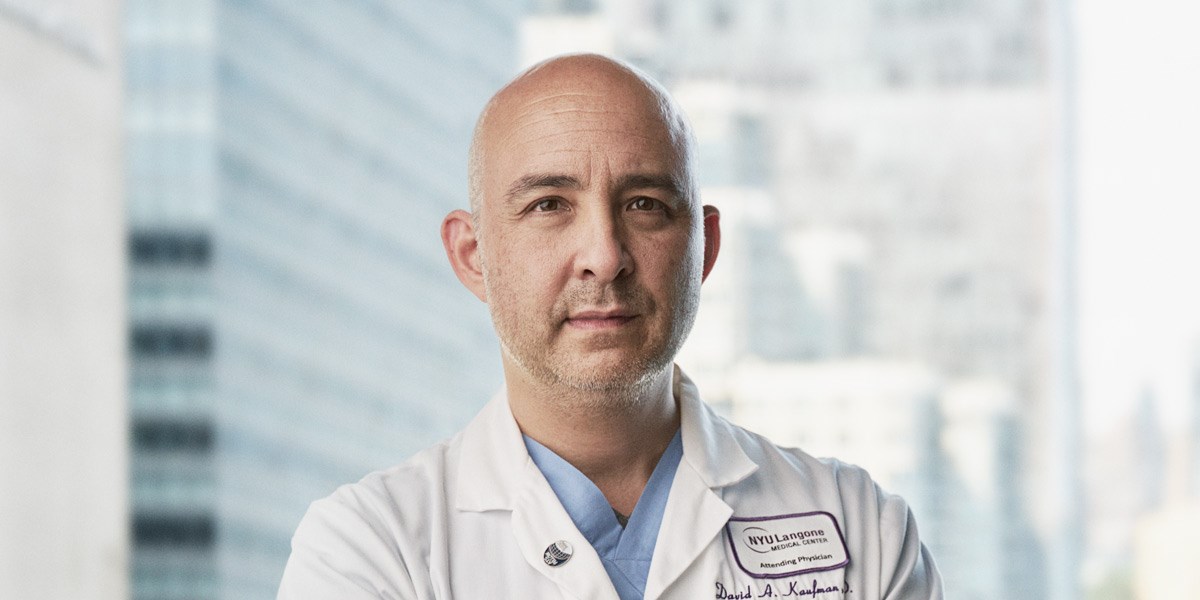As the world population ages and medical staffs shrink, the wise use of technology in intensive care will be critical. Getinge is driving the evolution of smarter, more holistic intensive care units (ICUs). How all of these highly complex systems work together requires re-thinking the way intensive care providers wield technology.
“The biggest challenge in the ICU today is the increased complexity of the patient demographics and the lack of resources to care for them,” says Jennie Haag, director of product management for ventilation for the Swedish medical equipment provider Getinge. “We are being born earlier and we live longer than ever before. This is, of course, wonderful, but it also comes with challenges.”

Haag points out a stubborn fact for intensive care providers. According to the World Health Organization, the population of people over the age of 65 will reach 800 million in five years. That’s about 10% of the world’s population. It’s also the case that patients over 65 account for more than 50% of admissions in ICUs.
Although we think of medicine today as quite advanced, in fact providers of healthcare have been cautious to embrace the digital revolution transforming the business world, for a good reason. It’s one thing to trust your credit card number to a platform that automates a payment process, and quite another to trust your life to a platform that automates vital sign monitoring. But the transformation is happening, and ICUs stand to benefit greatly as they face the dual challenge of increasingly older patient populations and increasingly smaller staff sizes.
Advanced monitoring techniques, for instance, provide doctors with more moment-by- moment information than they’ve ever had before. Instead of just heart rate and blood pressure, doctors today can assess blood chemistry, the volume of air moving through the lungs, tiny twitches in the diaphragm that signal the urge to breathe, brain activity and organ functionality, among many other things.
This higher level of information allows doctors to diagnose and treat patients with increased specificity. For decades, the advances of evidence-based medicine have allowed doctors to better understand how efficient and effective treatments are at the population level. But as David A. Kaufman, MD, Pulmonary & Critical Care Medicine at NYU School of Medicine in New York, likes to say, “Ultimately, every patient is his own universe.”

“We're talking about information that helps doctors and nurses synthesize not just how one organ system is working, but how organ systems are working together,” Kaufman says. “I think advanced patient monitoring holds the potential to allow those of us who are providing bedside care to come up with a higher-level picture of what's going wrong with the patient and how different interventions are interacting. It really allows us to tailor-make a specific patient care and adapt our care in real-time.”
But advanced monitoring contributes to another issue intensive care professionals deal with every day, the information overload. Take all those sensors and monitors and multiply them by the number of patients in an ICU, and knowing what to pay attention to becomes very difficult.
“We deal with thousands and thousands of data points, and we like to think that we know which of those data points are important and which of them are unimportant,” Kaufman says. “But we gather so much information, it's very easy to get distracted. It's very easy to follow blind alleys.”
This, Kaufman says, is true of all monitoring, advanced or basic. Any piece of equipment, used indiscriminately, can create “noise” in the flow of information doctors are trying to assess. Which is why the qualitative improvements in monitoring are more valuable than quantitative one.
“When used judiciously, in the right situation, advanced patient monitors can help cut through that thicket of bad or questionable information that we often get in the ICU,” Kaufman says.
It’s not just clearer monitoring; context and communication are key. Getinge, for instance, is also designing smarter interfaces that allow doctors and nurses to quickly make sense of all the information being presented to them. That way medical professionals can spend less time responding to equipment and more time focusing on the needs of the patient.
There is a lot for caregivers to respond to. Today’s ICU is a forest of blinking and pinging and beeping monitors and alarms, which can be disorienting.
It's like a chorus of crickets in the forest in September. It almost becomes white noise. It's a constant background part of the environment in the ICU.
Noise levels and the number of alarms going off in intensive care units are often found to be beyond acceptable levels and well above international recommendations. The average daytime noise levels have been reported to be around 60-65 decibels with peak levels up to 80-90 decibels, which is similar to being close to power tools in use.
Research shows that intensive care units with lower noise levels could potentially lead to better outcomes for patients and improve the situation for relatives and caregivers. That’s why Getinge, along with partners from other industries, are working side by side with clinicians and researchers to make the vision of a quiet ICU real in the future.
Incessant alarms affect both the patients trying to rest and the medical staff trying to care for them. “Alarm fatigue” at the end of a long shift may cause doctors and nurses to normalize alarms and to not react to them. So equipment makers are turning to smarter alarms. Some trigger visually or with haptic signals (like a vibrating phone). Other alarms are becoming remote, so the alarm occurs at the nurse’s station, or on a hand-held device beyond the patient’s hearing range.
The growing industry trend of remote control and display devices will bring several other advantages. Remote data displays, for instance, allow highly trained consultants who may not even be in the same city to have real-time input on a patient’s case. Controlling machines remotely also allows doctors and nurses to reduce their exposure to highly infectious situations. The more they can do from outside the room, the better in those cases. Remote control also allows a doctor or nurse to respond to Patient A’s immediate needs even if they are standing bedside with Patient B.
All of these technologies can make the ICU quieter, but only if there is a high level of integration between devices. Few hospitals are interested in becoming locked into one equipment vendor— administrators want the freedom to adapt as new and improved technologies become available from many vendors. For ICUs, that means finding ways to make all of those machines, made by different vendors, talk to each other to contextualize data and streamline workflows.
That will be important in the future, because another ominous shift is occurring in the demographics of health care: just as care grows more complex, the number of nurses available to help provide it is shrinking. Researchers project that one million RNs will retire by 2030, even as the need for more help in the ICU grows. Other studies have shown that adding just one additional patient to an ICU nurse’s workload increases the likelihood of death among those patients by seven percent. [1]
In order for hospitals to treat more patients with fewer nurses, critical care providers are turning to technology to streamline workflows. Devices must be connected and communicating to make sense of all the different data streams generated by a sick patient. That data should be easily read and quickly understood. Studies have shown that devices can reduce the cognitive workload of intensive care providers simply by displaying all the data on one platform, so the doctors and nurses don’t waste time and attention looking around the room at different displays. [2]
“Clinicians are telling us they are seeing an increase in patients and less personnel to treat them. They have to do more with less,” says Getinge’s Jennie Haag. “We strive to help them improve their workflow and provide more useful information. Automating services really helps doctors focus on the patient, rather on the equipment that they're using.”
Digital information is also evolving to not just show doctors what’s happening, but to help them decide what should happen next. Artificial intelligence can help with alarm management, for instance, looking at the state of the patient five, fifteen or sixty minutes before an alarm was triggered and “understanding” what the response to an alarm should be—more oxygen, less air medication, an increase of fluids. AI also provides the potential for decision support for doctors. Taking all the information generated from sensors on or in the patient, AI can create decision trees that make suggestions to doctors about what to do next.

“In the future, I believe that digitalization and especially artificial intelligence will play a big role in giving decision support in many clinical treatment situations”,” says Jens Viebke, president of Acute Care Therapies for Getinge. ”Clinicians will be helped by suggestions from artificial intelligence for how to treat a certain patient”
Data streaming from sensors monitoring ventilators, heart rate and blood pressure, blood chemistry and many other signals can be synthesized and processed by a computer much faster than the human mind.
“We should be able to give real time analysis and advice on how to change a treatment course of that particular patient,” says Viebke. “I believe we at Getinge can really improve clinicians’ workload with more decision support tools and automatic functions to make the complex procedures easier.”
Individually these details are small things, but the ICU of the future will likely feature heavier demand as our population ages and caseloads overburden tight staffing resources. At the same time, our ability to gather information about critically ill patients will continue to expand. We’ll have to make sense of it all to keep our most critically ill patients alive.
“I think we have only started the journey towards what digitalization really can offer to health care,” says Viebke.
